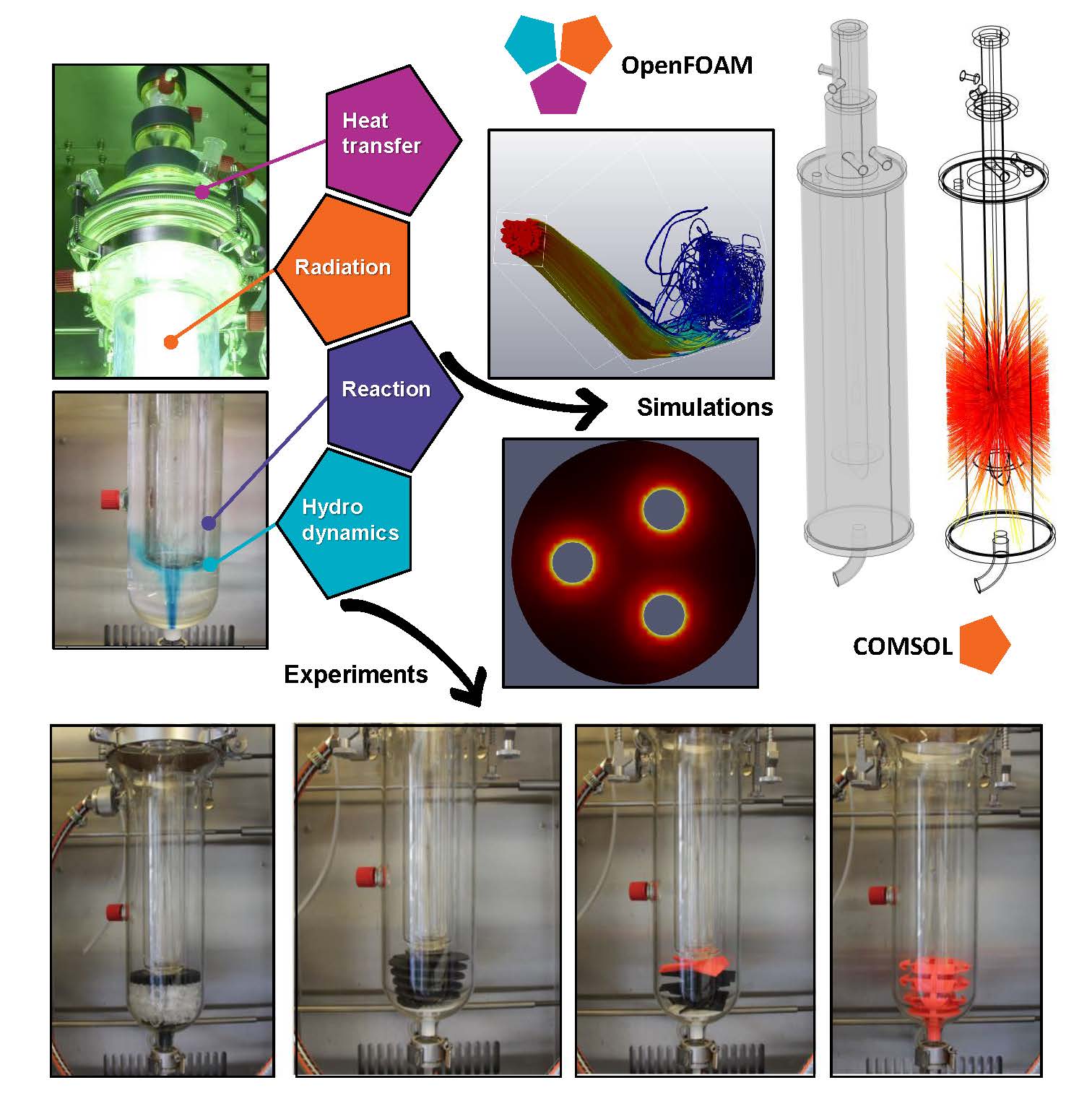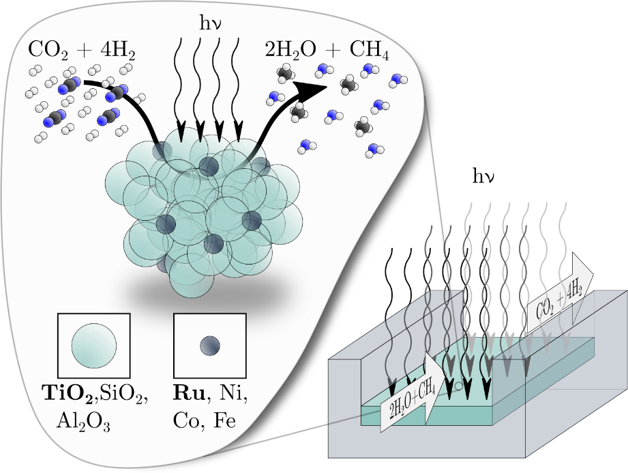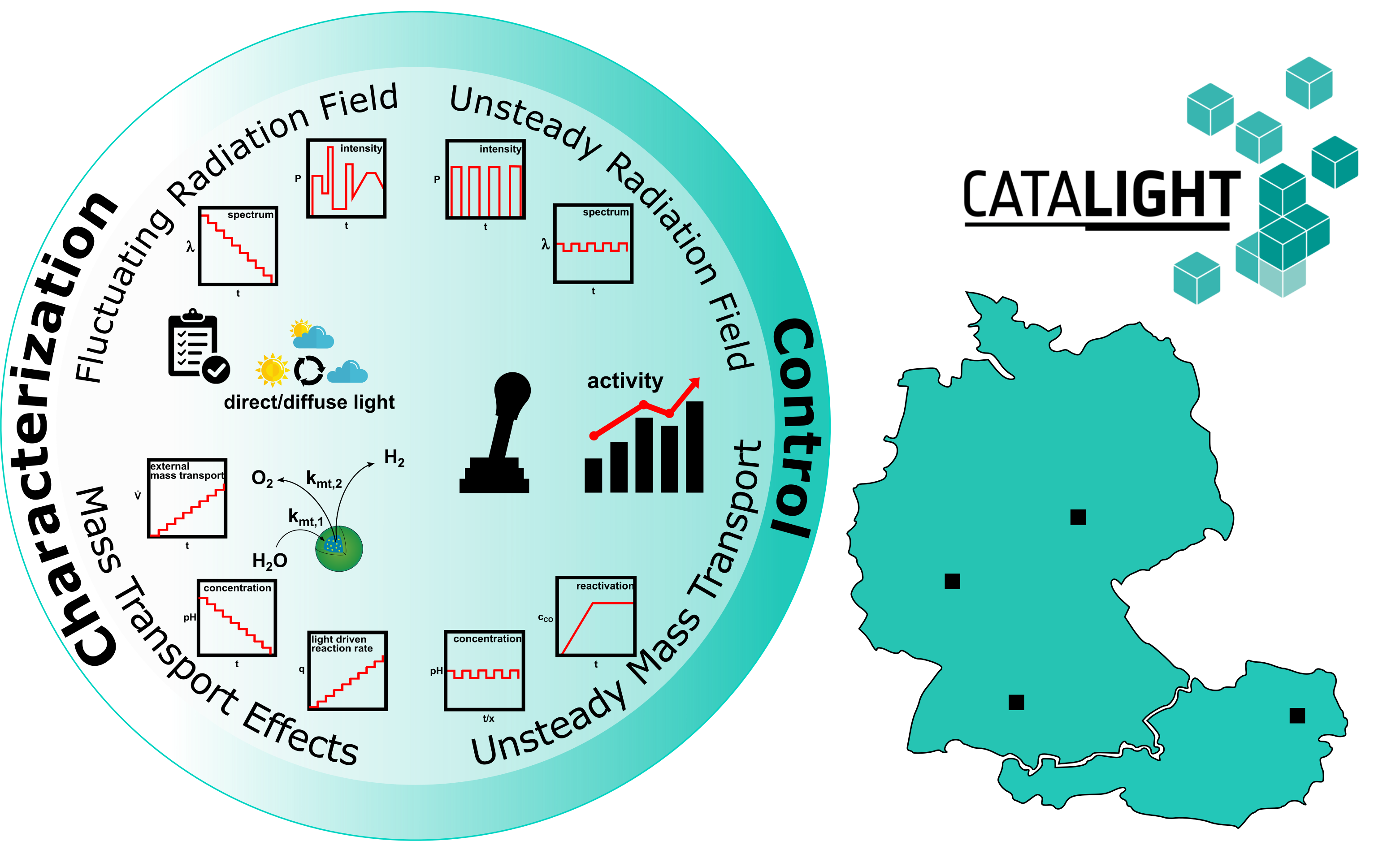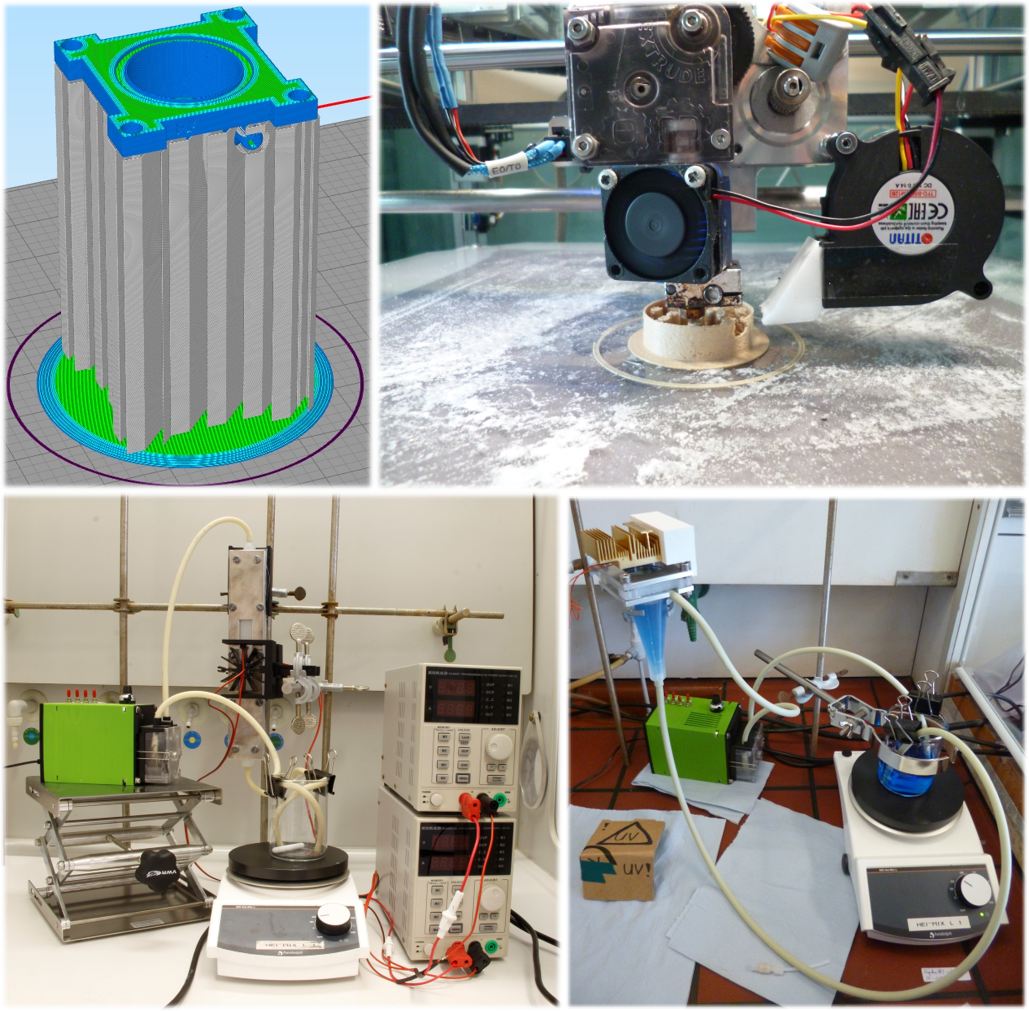Heterogeneous photocatalysis has been known for a long time mainly for its applications in degradation of organic impurities and photocatalytic water splitting. However, especially in recent years, photocatalytic reactions have also become important in organic synthesis. The irradiation of semiconductors with light of a suitable wavelength produces very reactive states, so called electron-hole pairs, which can be used for a variety of chemical reactions such as oxidations, reductions or C-C couplings.
Using the example of quinoline synthesis two important directions for the current development of photocatalysis are to be addressed in the present research project. On one side improved and optimized for organic synthesis photocatalysts will be developed and on the other side a scalable photoreactor concept in which the process can be operated continuously is aimed. The results should be applicable not only for the selected target reaction, but also for other heterogeneous photocatalytic reactions.
The work program is handled by three research partners:
At Justus-Liebig-Universität Giessen, the research group Marschall works on the further development of photocatalysts.
At DECHEMA Research Institute, kinetics studies are used to investigate and optimize the reaction behavior.
Photoreactor development is carried out at the research group Ziegenbalg, Institute of Chemical Engineering at Ulm University. Various photoreactor concepts are to be developed and investigated using rapid prototyping. In this case, both approaches in which the photocatalyst is suspended and those which are immobilized on the walls of the photoreactor are tested and compared.
Involved Members: Fabian Guba
Collaborators: Dr. Jonathan Z. Bloh, Prof. Dr. Roland Marschall
Funding: Supported by Federal Ministry of Economic Affairs and Energy (BMWi) on the basis of a decision by the German Bundestag within the project within the project IGF 18904 N/3
Key Publications:
- F. Guba, Ü. Tastan, K. Gugeler, M. Buntrock, T. Rommel, D. Ziegenbalg, Chemie Ingenieur Technik. 2019, 91 (1–2), 17–29. 10.1002/cite.201800035.
- F. Guba, F. Gaulhofer & D. Ziegenbalg, Imposed dynamic irradiation to intensify photocatalytic reactions, Journal of Flow Chemistry, 2021, 10.1007/s41981-021-00174-1




